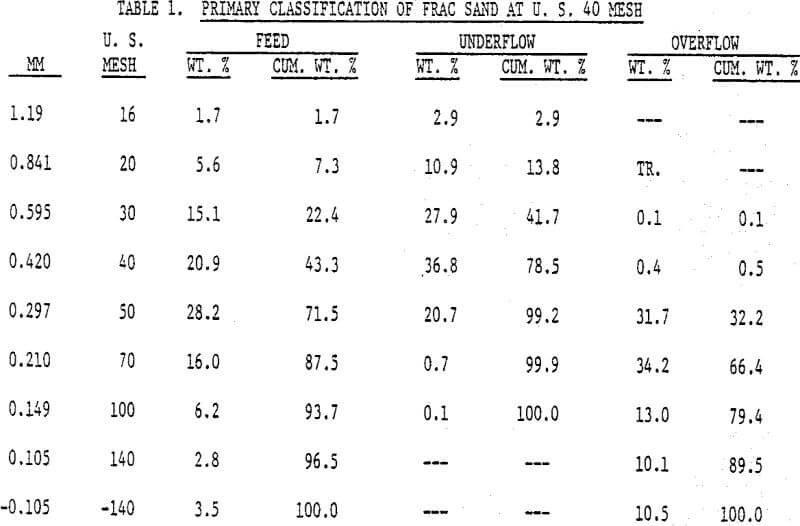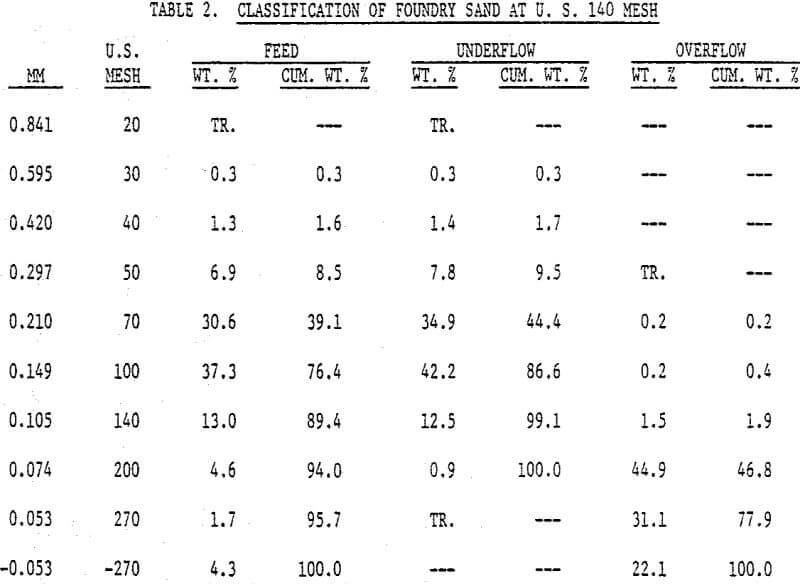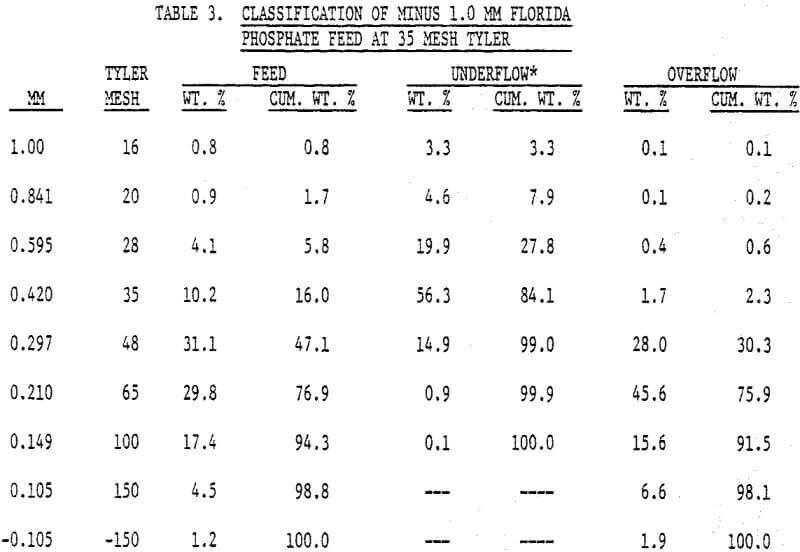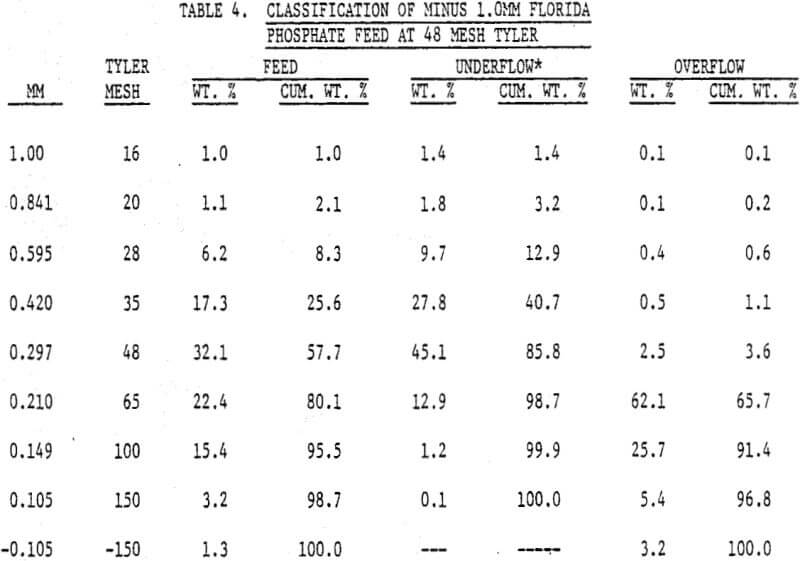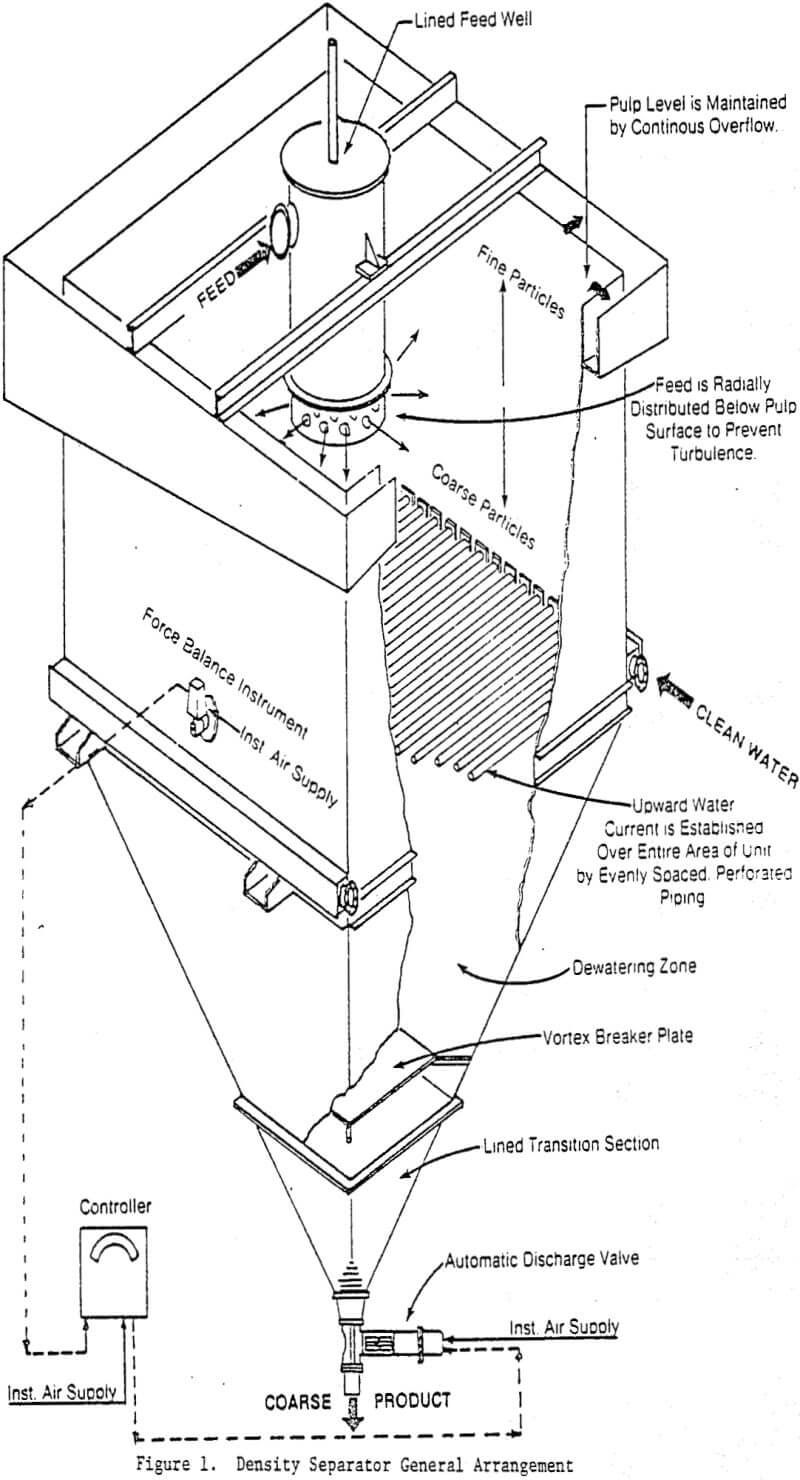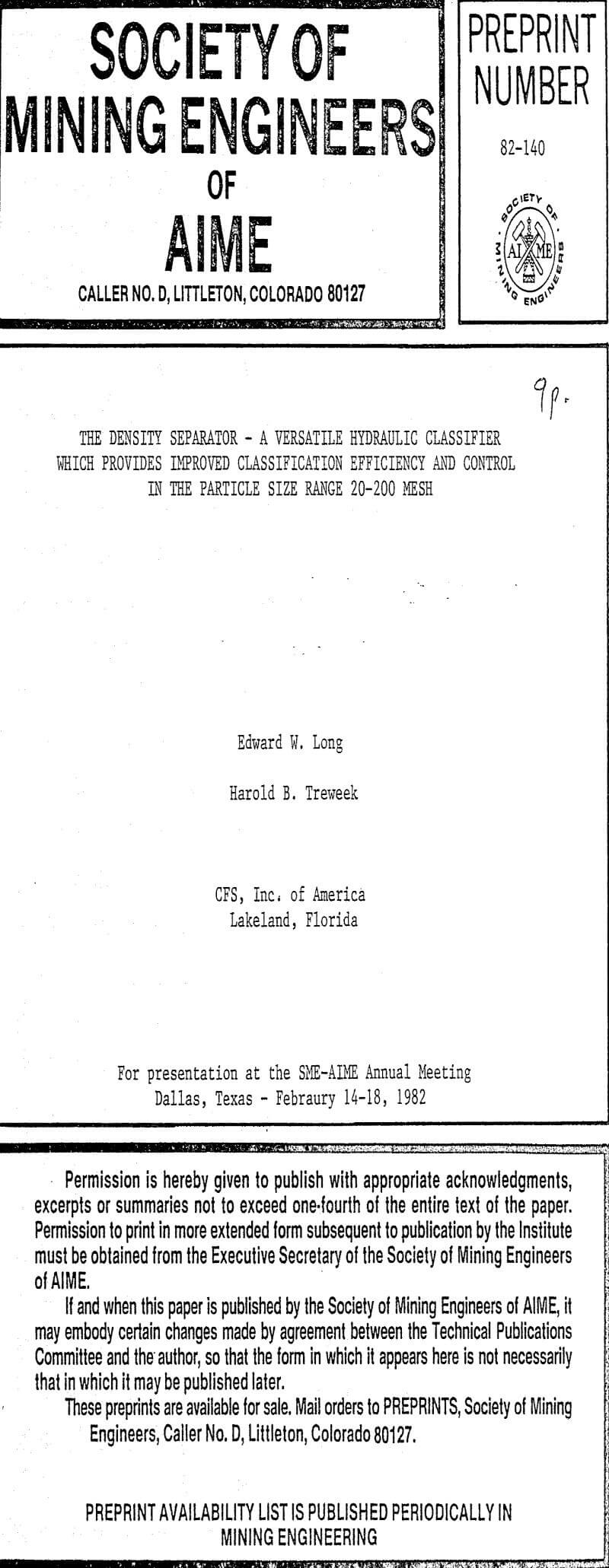The Density Separator is basically a hindered settling classifier with automatic control features that provide steady, sharp classification irrespective of extreme variations in dry tons per hour of feed solids up to the design maximum throughput for the particular material being treated.
The Density Separator is a hydraulic classification device consisting of an upper parallel-walled section of square or rectangular cross section and a lower section consisting of one or more pyramidal discharge units. A rising current of water is established over the entire area of the upper unit by injection of a pre-determined flow of water through a series of horizontal, evenly-spaced, perforated pipes located at the junction of the upper and lower sections. The perforated pipes are installed to direct the flow straight down.
A mineral slurry continuously introduced into the upper unit through one or more feedwells is expanded into a teetered state by the rising water current. The particles are classified with the coarser material reporting to the bottom of the teetered mass while the progressively finer material is distributed in the upper portion. Pulp level is maintained by a continuous overflow of the unit.
For a pre-set upward current of water, the specific gravity of the mineral suspension at the level of the force-balance instrument is indicative of the average particle size of material above the instrument.
The salient operating features of the Density Separator are (1) sharp and controllable classification over the particle size range of 0.841mm (20 mesh Tyler) to 0.074mm (200 mesh Tyler), (2) relative insensitivity to solids feed rate up to design maximum, and (3) versatility of application.
Typically, deslimed minus 1.0mm feed material consisting of a mixture of phosphate mineral and quartz is sized at 0.420mm (35 mesh Tyler) to produce fine and coarse flotation feeds which are directed to separate flotation circuits. Suffice to say that the flotation or concentrating equipment in each of these circuits is different and, generally speaking, the fine flotation circuits exhibit poor recovery of plus 0.420mm phosphate values, whereas, the coarse concentration equipment will satisfactorily recover minus 0.420mm phosphate values at acceptable grade.
Operation of the Density Separator is not sensitive to variations in the solids feed rate up to the design maximum. The unit does, however, require a relatively constant volume feed rate of slurry. This is generally achieved in practice by feeding the unit with a constant speed centrifugal pump operating with a constant suction head. The per cent solids by weight of the slurry is maintained below design maximum by control of dilution water in the pumping system.
